Why LIC Is Losing The Share Price Value? Who Is To Be Blamed For The IPO Loss?
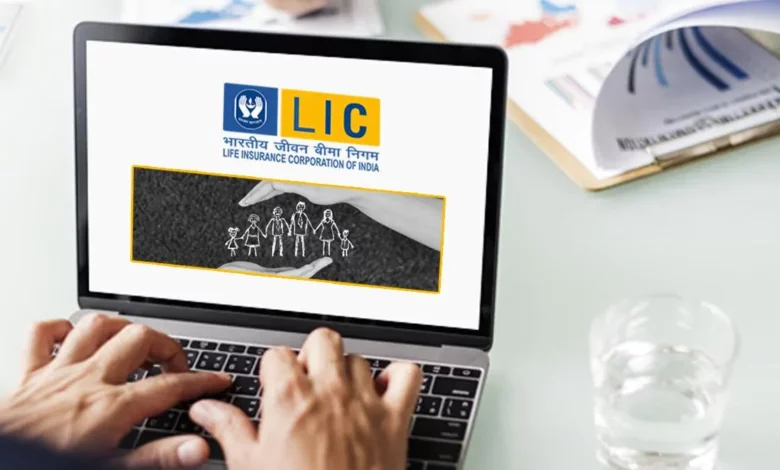
Why LIC Is Losing The Share Price Value? Who Is To Be Blamed For The IPO Loss?
The IPO of LIC was the country’s largest ever. The government sold 3.5 per cent of its stock in the insurance behemoth in the IPO.
The IPO drew the largest ever retail response to an IPO and was the world’s third-largest.
In contrast to the customary 3-day window, the 21,000 crore public issue garnered roughly three times the subscription in a six-day subscription IPO.
The IPO did not go well when it was listed.
LIC’s market capitalisation decreased about 8% after it was listed, resulting in a loss of 46,500 crore.
The stock hasn’t recovered since then.
LIC’s stock is down 15% from its IPO price of $949. The stock market’s inherent volatility has negatively harmed the stock.
Analysts believe the insurance business is highly susceptible to market movements which could impact its embedded value. As a result, the stock has been in a downtrend.
Inflationary concerns coupled with investor sentiments jittery about economic growth had a negative impact on LIC in the short term.
Not to mention the weak quarterly results posted by the insurance behemoth for the March 2022 quarter.
Weak Quarterly Results
Shares of the company fell earlier this week as the company posted a 17% YoY decline in net profit at ₹ 2,410 crore for the March 2022 quarter.
The insurer had earned a profit of ₹ 2,920 crore in the same quarter a year ago.
However, the company’s net premium income increased by 17.9% year over year to 1.4 lakh crore from 1.2 lakh crore in the last quarter.
The income from first-year premiums climbed 32.6 per cent year over year, while renewal premiums increased 5.4 per cent year over year.
This is the company’s first earnings statement after being listed on the exchanges.
The company’s investment income came in at 67,800 crore, practically unchanged from the March 2021 quarter’s figure of 67,700 crore.
Its 13th-month persistency ratio was 69.2 per cent, down from 73.9 per cent the last month.
LIC made a profit of 4,000 crore in the fiscal year 2022, compared to 2,900 crore in the fiscal year 2021.
In addition, LIC did not show its most recent Indian embedded valuation statistic for the period ending in March. The management stated that it is working on calculating the Indian embedded valuation, new business value, and new business margin, which is expected to be finished by June 30.
LIC stated that its inherent valuation was 5.4 lakh crore before its IPO.
The corporation declared a 1.5-per-share dividend.
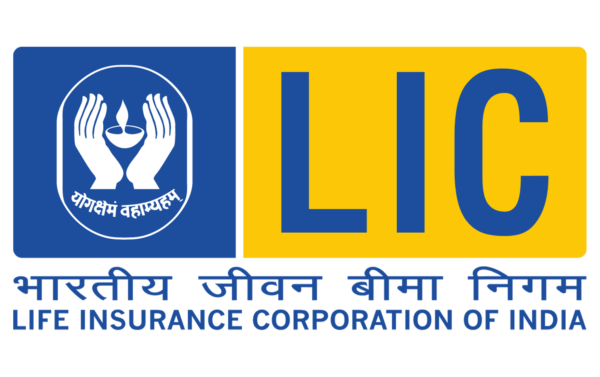
About LIC
The Life Insurance Organisation of India (LIC) is an Indian statutory insurance and investment corporation headquartered in Mumbai. The Indian government has jurisdiction over it.
On September 1, 1956, the Indian Parliament passed the Life Insurance of India Act, which nationalised the Indian insurance industry. Over 245 insurance firms and provident societies were merged to become the state-owned Life Insurance Corporation of India.
LIC reported 290 million policyholders in 2019, a total life fund of 28.3 trillion, and a total value of sold policies of 21.4 million in 2018–19. In 2018–19, the business announced that it had settled 26 million claims.
History
Founding organisations
In Kolkata, the Oriental Life Insurance Company was founded in 1818, making it the first company in India to offer life insurance coverage. Its main target market was Europeans living in India, which charged higher premiums to Indians. Hindustan Insurance Society, which eventually became Life Insurance Corporation, was created by Surendranath Tagore.
The Bombay Mutual Life Assurance Society was the first domestic insurance company founded in 1870. In the pre-independence era, other insurance businesses included:
· Postal Life Insurance (PLI) was introduced on February 1 1884
· Bharat Insurance Company (1896)
· United India (1906)
· National Indian (1906)
· National Insurance (1906)
· Co-operative Assurance (1906)
· Hindustan Co-operatives (1907)
· The New India Assurance Co Ltd (1919)
· Indian Mercantile
· General Assurance
· Swadeshi Life (later Bombay Life)
· Sahyadri Insurance (Merged into LIC, 1986)
The first 150 years were dominated by economic upheavals, like India’s First War of Independence, World War I, and World War II. The cumulative effect of these occurrences resulted in a high rate of life insurance company liquidation in India and a negative impact on the public’s belief in the usefulness of acquiring life insurance.
Nationalization in 1956
In the Union Budget of 2021, Finance Minister Nirmala Sitharaman showed a proposal to undertake an IPO for LIC. The IPO is scheduled for 2022. After the public listing, the government of India will remain the primary shareholder. Existing LIC policyholders are expected to get 10% of the shares. The government of India proposed in 2021 to increase the permitted capital of Life Insurance Corporation of India to $250 billion to assist its public listing, which is set to begin on April 1 of the following fiscal year.
The deal has been dubbed “India’s Aramco moment” due to the size of the offering and LIC’s ownership structure, a reference to Saudi Aramco’s 2019 IPO, which is of comparable magnitude.
LIC stated that its IPO would begin on May 4, 2022, and end on May 9, 2022. As the sole owner of LIC, the Government of India wants to raise Rs 21,000 crore through this IPO, compared to Rs 65,000 crore to 70,000 crore by diluting 5% stock earlier, implying a valuation compromise of more than 50%. The valuation rises to roughly Rs 6 lakh crore based on the IPO pricing band for 3.5 per cent holdings for Rs 21,000 crore.
Structure
The LIC’s central office is located in Mumbai. Delhi, Chennai, Mumbai, Hyderabad, Kanpur, Kolkata, Bhopal, and Patna are the eight Zonal Offices of LIC.
Liberalisation post-2000s
The Indian government began a campaign in August 2000 to liberalise and open up the insurance business to the private sector. LIC benefited from this approach, reporting a first-year premium CAGR of 24.53 per cent in 2013 and a total life premium CAGR of 19.28 per cent, both of which were in line with the life insurance industry’s development and outperformed general economic growth.
Awards and recognition
• According to the Brand Trust Report, we were voted India’s Most Trusted Brand in the BFSI category for four consecutive years, from 2011 to 2014.
Charity initiative
Golden Jubilee Foundation
LIC Golden Jubilee Foundation was founded as a charitable organisation in 2006. This organisation aims to promote education, alleviate poverty, and improve the living conditions of the poor. The Golden Jubilee Scholarship grants are the most well-known of the organization’s operations. This prize is provided each year to deserving students in grades XII or equal who aspire to continue their education and have a parental income of less than 200,000 (US$2,600).
Holdings
Banks, cement, chemicals, and fertilisers, electricity and transmission, electrical and electronics, engineering, construction, and infrastructure, fast-moving consumer goods, finance and investments, healthcare, information technology, metals and mining, motor vehicles, and ancillaries, oil and natural resources, retail, transportation, and logistics are just some of the sectors in which LIC invests.
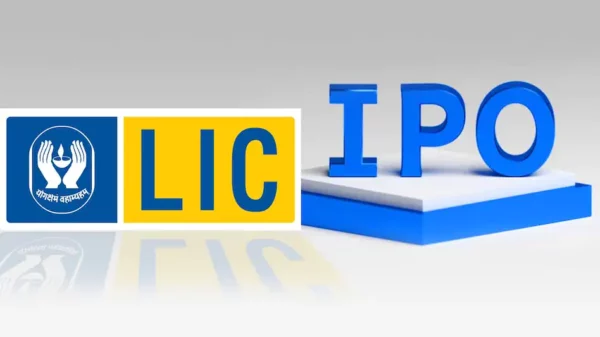
About LIC IPO
LIC’s IPO began on May 4, 2022, and ended on May 9, 2022.
On May 2, 2022, the anchor investment will open. The central government had planned to sell roughly 5% of its shareholding, but the sale was reduced to 3.5 per cent. For shares, the range is Rs 902 to Rs 949.
Employees and retail investors will receive a Rs 45 per share reduction, while policyholders will receive a Rs 60 per share discount.
What are the benefits for LIC Policyholders in LIC IPO?
Budget officials announced in the 2022-2023 fiscal year that up to 10% of the LIC IPO issue size would be earmarked for policyholders. Officials from the LIC have said to update their PAN card information to benefit from the proposed public offer.
Suppose you are a LIC policyholder interested in applying for the impending LIC IPO. In that situation, you will need a Demat account and your PAN card information updated on your policy records.
Competitive Strength
• India’s largest insurance provider and the world’s 5th-largest insurer by GWP.
• Strong omnichannel network, with 1.34 million agents, 3463 active Micro insurance agents, and 174 other channels.
• India’s largest asset manager with a proven track record of financial performance; highly experienced and skilled management team.
Objects of the Issue
• To conduct a sale offer for 316,249,885 shares from selling shareholders.

LIC is down 20% from the IPO price. Is there more pain ahead?
Since its launch on Dalal Street last month, shares of Life Insurance Corporation have been trending lower. The stock is currently trading at a discount of more than 20% to its price of Rs 949.
The bond fell 3% to a new low of Rs 753.35 on the BSE on Tuesday, while its market capitalization (m-cap) fell below Rs 5 lakh crores to Rs 4, Rs 76,683 crores.
The insurance behemoth had a sluggish start, with shares selling at a 9% discount to their IPO price. With a market capitalization of Rs 5.70 lakh crore, it was already the sixth-largest listed business by post-debut market capitalization.
Even though brokerage houses gave the first IPO a positive rating, many analysts now believe the stock is ideal for long-term investors or those with a higher risk appetite. The stock is putting greater selling pressure on them.
According to Ravi Singh, Vice President and Head of Research at ShareIndia, LIC could face selling pressure in the future trading sessions and could hit Rs 750-700 levels.
He noted that while it is preferable to sell the stock at current levels, investors with a high-risk appetite should hold on to their positions and wait for the trend to turn.
“LIC shares have been dogged by volatility since their inception on the stock exchanges. The insurer’s profit downturn disclosed last month did not help matters. Many observers doubt LIC’s ability to evolve in the modern world, as the company’s management claims. Wright Research’s founder, Sonam Srivastava, said:
In its first financial statement last week, the company recorded a 17.41% decline in March quarter net profit to Rs 2,409.39 crore, compared to Rs 2,917.33 crore in the last quarter year. Its net premium income for the quarter was Rs 1,44,158.84 crore, up 17.88% from Rs 1,22,290.64 crore a year ago.
Despite the fact that fast-moving indicators suggest substantial growth in the current quarter, Srivastava warns investors to be cautious.
According to him, LIC, on the other hand, has several advantages, like strong brand equity, a huge agent network, and an enviable network. Long-term investors should buy these shares at current market prices and employ the buy-in-the-bust strategy, he advised.
Emkay Global commenced coverage on LIC with a hold rating and a price target of Rs 875, based on a 0.9x June EV of 0.9x.
“Three aspects underpin our neutral view: low VNB relative to EV, restricting potential RoEV to a near-premium cancellation rate; weaker APE growth and margin prospects vs. private sector peers, as costs rise; and lower APE growth and margin prospects vs. private sector peers, as costs rise.” The inherent volatility in EV, as 35% of non-nominal assets are in equities, and there is no history of equity movement; and the higher commission fees and operating expenses of LIC limit the scope for product and channel diversification; and the inherent volatility in LIC, as 35% of non-nominal assets are in equities and there is no history of equity movement. EV under the new fund fork structure,” he said.
“While we admire LIC’s market leadership position and comfortable valuations,” it wrote in its research, “we prefer private-sector counterparts with superior growth, profitability, and thus higher RoEV potential.”
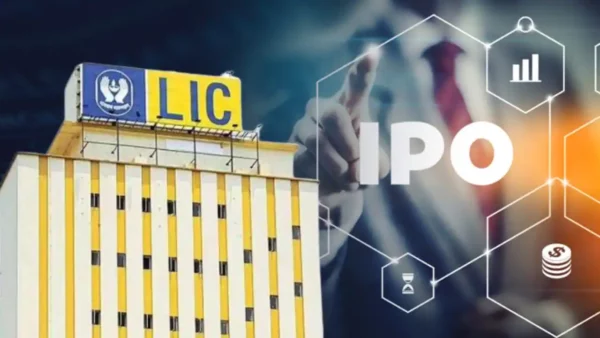
LIC’s Flop Show Continues, Shares Hit New Low, Valuation Dives: 5 Points
1. LIC’s market capitalization has fallen below 5 lakh crore for the first time. On Monday, LIC’s market capitalization decreased to 4.91 lakh crore. The market value of the company was just over 6 lakh crore at the issue price of 949.
2. LIC shares were offered on stock exchanges on May 17. Since the scrip was listed, only four trading sessions have ended in the green.
3. The state-run insurance reported a 17 per cent drop in total net profit for the March 2022 quarter, coming in at Rs 2,410 crore.
4. However, LIC’s net premium income increased by 17.9% to 1.4 lakh crore from 1.2 lakh crore in the same period last year.
5. Policyholders received a 60 per cent discount on equity shares, while retail investors and employees received a 45 per cent discount. LIC policyholders received shares at a price of 889 per share, while retail investors received shares at a price of 905 per share.
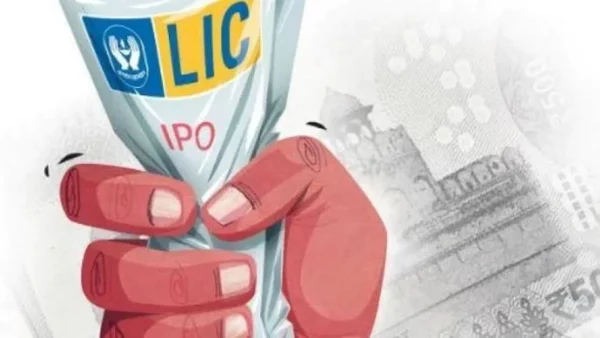
LIC shareholders lose Rs 1.23 lakh crore in 16 sessions; what’s next?
According to the upper price band of India’s largest IPO, the public sector insurer’s market capitalization decreased to Rs 4,76,556 crore today, down from Rs 6,00,242 crore yesterday.
LIC stockholders have lost Rs 1,23,686 crore in the last 16 trading sessions due to today’s drop. After two weeks on the market, the stock has dropped 15.29 per cent, or Rs 115.05, from its IPO price. On May 17, the stock had a shaky debut, debuting at a discount of 8.62 per cent to the IPO issue price. The company set a price range of Rs 902- Rs 949 for its stock. On the BSE, it was listed at Rs 867.20.
The stock was listed at Rs 872 on the NSE, which was 8.11 per cent lower than the IPO price.
Here’s what experts had to say about how investors should handle the stock now that it has hit a new low.
“At the current pricing, it may be accumulated with at least a three-year perspective,” stated Prasant Bhansaali, Director – Mehta Equities. It will continue to be under pressure for a bit of longer, as anchor investors will be able to withdraw after June 16. However, given the relatively low valuation at lower levels, domestic retail and HNI investors will be interested. Institutional investors will hold off on purchasing it for a little longer.”
Swastika Investmart’s Head of Research, Santosh Meena, stated, “LIC Ltd., the insurance behemoth, is selling at a discount to its IPO price. The issue was priced at a discount to its domestic and worldwide counterparts, with a price to the embedded value of 1.1 times.
Concerns about the corporation losing market share to private competitors, poorer profitability and revenue growth relative to private companies, lower VNB margins, and short-term persistency ratios are all discounted in this valuation. However, we believe that India’s neglected life insurance industry is still in its infancy and that it is ideally positioned to take advantage of the immense development potential.”
Sunil Damania, MarketsMojo’s Chief Investment Officer, stated, “When LIC’s IPO was announced recently, we recommended investors to stay away from it. This is because, at the time, we thought the company’s valuation, and the one it was seeking, was a little high. Furthermore, the market would be wary about the government of India decreasing its stake in the LIC IPO regularly to comply with SEBI standards. However, given the current market environment and the stock’s post-IPO correction, we anticipate that LIC will continue to underperform in the future, even at this level. As a result, we recommend investors to avoid LIC.”
Proficient equities Private Limited’s founder and director, Manoj Dalmia, stated, “On the NSE, the share price of LIC prolonged its decline and hit a new low of Rs751.50. After a gap down the beginning, LIC’s stock closed at Rs 753.0 intraday, breaking the previous low set the day before. Following this new low, the LIC share price is currently trading at about 21% below its issue price of Rs 949 per equity share.
The following could be the explanation behind this:
A. Stock has failed to attract the interest of FIIs
B. Q4 results are were not that encouraging
C. No comparable valuation is available, thus making valuation abstract among investors
Given the anchor investor lockin expiring by the middle of this month and the price pattern indicating the same, the stock’s prognosis will be gloomy. Investors are advised to avoid buying and averaging the stock unless a price reversal is witnessed. The downside levels are Rs 741 and Rs 713.”
GCL Securities Limited Vice Chairman Ravi Singhal stated, “As we can see, the stock has been continuously falling since its IPO. To fault are the following factors: The results were disappointing, and the listing price was lower than the issue price, trapping many investors, mainly newcomers.
Investment valuations decline when market dynamics deteriorate. And while the direct sales vertical remains strong, the market is waiting to see if it will transition to an online platform or continue to lose market share. It is weak from a technical standpoint. It’s currently out of stock. As a result, sell near Rs 777 on a gain, with a stop loss of Rs 822 and a target of Rs 677. Long-term investors can maintain it, but it won’t outperform the Nifty until it enters the online market.”
Should You Invest in LIC IPO?
For the first nine months of FY 2022, LIC is India’s largest life insurer, with a market share of 61.6% per cent in total premiums and 61.4 per cent in new business premiums. Furthermore, it is the largest life insurer in terms of gross written premium, new business premium, number of individual policies issued, and number of group policies issued.
As of September 2021, the IPO is valued at 1.1 times its Embedded Sum (EV), which is the present value of future income plus the market value of net assets. When compared to the typical private life insurance valuation, it represents a 65 per cent discount. The LIC is valued at Rs 6 lakh crore, while the market expects it to be around Rs 12-14 lakh crore. Furthermore, listed counterparts like HDFC Life Insurance trades at 4.1 times Embedded Value, SBI Life at 2.9 times Embedded Value, and ICICI Prudential Life Insurance at 2.2 times Embedded Value.
Because LIC is valued at a significant discount to its listed peers, retail investors may see the LIC IPO as a good investment opportunity. It will address concerns about India’s largest life insurer’s continuously declining market share.
LIC has been a constant player in the life insurance industry with stable margins and a well-diversified product range. Furthermore, LIC will soon strive to regain market share by focusing on growth momentum, even as the epidemic spikes demand for life insurance.
What are the risks of the LIC IPO?
LIC is up against stiff competition from private life insurance providers in metropolitan regions. It has lower short-term persistency ratios, affecting the insurer’s financial health.
Furthermore, following the Russia-Ukraine crisis, financial markets have been turbulent, and the RBI may shortly raise interest rates. Private life insurers are gaining market share from LIC. Lower revenue growth and profitability, and declining Value of New Business (VBN) margins, are major issues.
The LIC IPO may interest investors looking to make a long-term investment in the life insurance industry. Furthermore, LIC tackles market share concerns by focusing on life insurance up-selling and cross-selling and producing life insurance products for millennials and protection-based products like a term life insurance. In a word, if you favour the life insurance sector, which is expected to grow rapidly in the future, you might consider the LIC IPO.
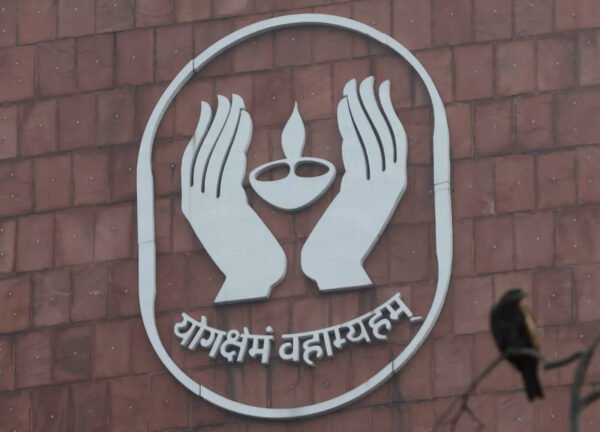
Who Is To Be Blamed For The Lic IPO Loss?
Flop Show? Govt Blames Weak LIC Listing on ‘Unpredictable Market Conditions’
Tuhin Kanta Pandey, Secretary of the Department of Investment and Public Asset Management, said on Tuesday that the country’s largest insurer, LIC’s shaky start on the stock exchanges, was due to unpredictably volatile market conditions and advised investors to hold on to the stock for long-term value.
On Tuesday, LIC listed its shares on the NSE at a discount of 8.11 per cent, at Rs 872 a share.
The shares were listed on the BSE at Rs 867.20 each, down 8.62 per cent from the issue price of Rs 949.
After a successful IPO that netted the government Rs 20,557 crore, LIC set the issue price of its shares at Rs 949 per share.
“No one can forecast the future of the market.” “We’ve been saying it shouldn’t be held for a single day, but for several days,” Pandey told reporters after the stock’s IPO.
Retail investors and qualifying employees received a discount of Rs 45 per share in LIC’s offer-for-sale share sale, while policyholders received a discount of Rs 60 per share.




